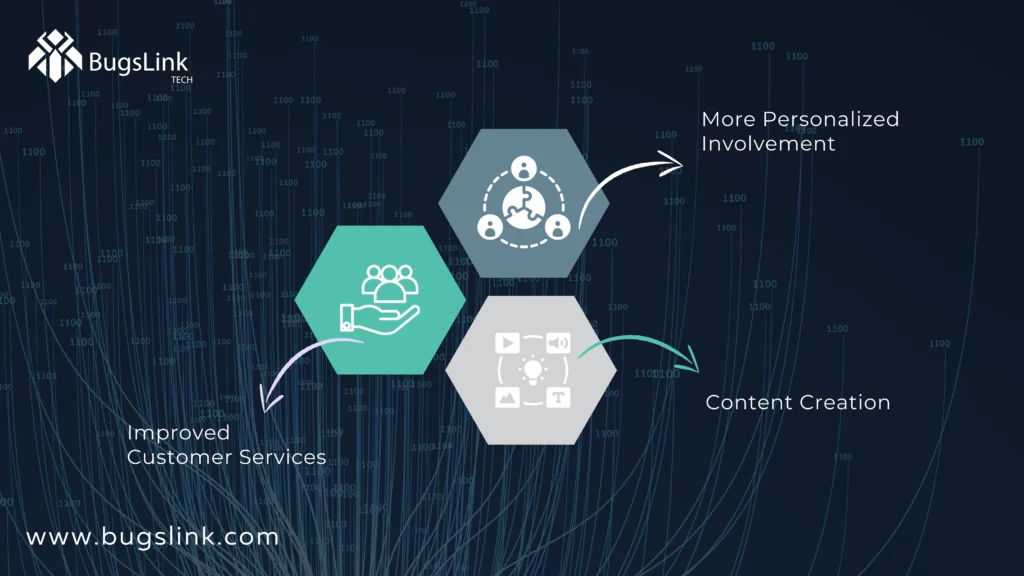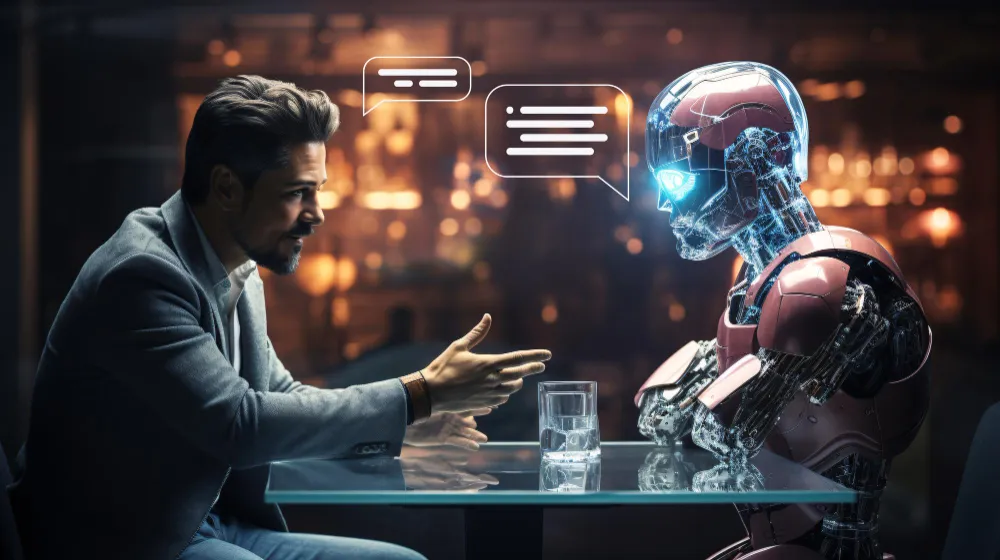Artificial intelligence is revolutionizing human lives daily. The newest advancement, generative AI systems, has streamlined and personalized our digital environment. Undoubtedly, it’s an unexpected reality that we can interact with our gadgets.This blog post is a guide that aims to answer emerging questions about generative AI. It explores how generative AI systems enhance user interaction, whether they can solve computer science, What the main Goals and benefits of Generative AI are, and how they can augment human Creativity. It also explores how to capitalize on generative AI.
Moreover, it sheds light on this technology’s practical uses and profound influence on our day-to-day existence, making you more aware and informed.
Generative AI
Artificial intelligence is a vast field, and generative AI is its most compelling aspect. This technology has the potential to produce content across diverse fields, mimicking human behavior, writing, generating music, and coding. Generative AI catalyzes human Creativity, creating material that assists and reflects our creative potential through learning algorithms. Unlike traditional AI, which relies on pre-established data sets and rules, generative AI is a game-changer. Notable examples are GPT-3 and Gemini for text generation and DALL-E for picture creation.
To better understand AI, it is essential to know the distinctions between a few terms and aspects described below.
Traditional AI Vs Generative AI
Traditional artificial intelligence is a basic form that has been transformed into an advanced aspect called generative AI. It recognizes patterns and data-based prediction, while generative AI takes updates, learns from current data, and produces new content, including text, pictures, and music. This capacity of generative AI to make fresh, coherent material distinguishes it and improves user interaction in many ways.
Generative AI vs Conversational AI
Conversational AI is a subset of traditional AI designed to replicate and replace human conversation. While it can interpret and respond to user queries, it comes alive when paired with the creative skills of generative AI. Generative AI can construct complete dialogues, articles, and artwork, elevating the user experience to new heights of immersion and excitement.
How Generative AI Systems Enhance User Interaction?

Explore the revolutionary power of contemporary generative AI systems, specifically in the future of user interaction. Generative AI improves user engagement with digital platforms by providing customized recommendations and creating unique marketing content.
I remember working on a project where using AI to create personalized experiences really improved user engagement. We saw that people reacted much better to product suggestions tailored to their interests, thanks to generative AI, which analyzed preferences in real time.
Here are the specific benefits I noticed:
More personalized involvement
Generative AI empowers and personalizes human experiences with technological devices. This is possible because these systems can customize interactions, suggestions, and information to specific preferences through data analysis and pattern recognition. Generative AI enhances user experiences with customized news feeds, product recommendations, and targeted advertising, putting the power of personalization in their hands.
For instance, E-Commerce platforms use this technology to produce and recommend their products according to their user’s interests. Such personalized advertisements prominently increase their sales and conversion rate.
Improved Customer service
Customer service is one of the most prominent applications of generative AI, which is improving user interaction. AI-powered chatbots and virtual assistants, including OpenAI’s GPT-3, are being deployed more frequently to address consumer inquiries. These systems easily understand natural human language, offer prompt responses, and even participate in meaningful conversations with users. Generative AI enhances customer satisfaction and enables human agents to concentrate on more intricate issues by automating routine tasks and providing 24/7 support, relieving users of the wait, and providing instant solutions.
For example:
Banks use AI chatbots to help customers with routine banking duties, such as transferring money, checking account balances, and responding to frequently asked questions.
Content creation

Generative artificial intelligence also significantly influences content development, allowing users to produce excellent material quickly. Undoubtedly, it assists many creators, such as Jukedeck and DALL-E, in creating original music and graphics. With inexpensive tools, content producers can create original images and soundtracks, democratizing the creative process. Generative AI augments human Creativity by offering multiple creativity, brainstorming, and prototyping tools that increase human Creativity. Writers, designers, and artists can use generative AI to develop fresh concepts, create products, and explore new ideas, thus enhancing their creative processes.
Generative AI in Design
Generative AI has completely changed the design process and revolutionized all design industries:
Architecture Industry
Building structures and urban layouts are being created optimally using generative design algorithms in architecture and urban planning. For example, the Autodesk project “The Living” investigates generative design in architecture to produce aesthetically beautiful and valuable buildings.
Fashion industry
Fashion designers are using generative AI to create unique garment designs. Firms like Nike have employed unique design algorithms to produce groundbreaking shoe styles. By giving commands like material limitations and performance requirements, the algorithm may provide many design alternatives that satisfy the required standards, delivering highly specialized and optimized products.
Automotive Industry
In the automotive field, generative AI is essential to several aspects, including car design, testing, and production. Complex designs may be created, components optimized, real-world scenarios can be simulated to test autonomous driving systems, and production processes can be streamlined with predictive maintenance and quality control. This technology speeds development, promotes creativity, and improves car efficiency and safety.
Bottom line
The continuous strides in generative AI are changing how humans interact with devices and the fabric of our technological landscape. Generative AI systems are not just enhancing customer service and personalizing experiences; they are revolutionizing industries, enabling creative content development, improving user interfaces, and providing advanced data analysis.
This transformative power of generative AI is making technology more accessible and engaging, and its impact on user engagement is set to soar, creating new opportunities and reshaping the way we perceive industries.
FAQS
Generative AI can address several computer science issues, particularly those related to pattern recognition and data generation. However, it is only a magic bullet for some problems.
Though less often used, generative AI could refer to machine learning-like AI systems that evolve and adapt over time.
Generative AI can help with medical research, personalize experiences, automate creative jobs, and provide educational content.
Generative AI finds solutions in content production, data augmentation, design, personalization, and simulation.

